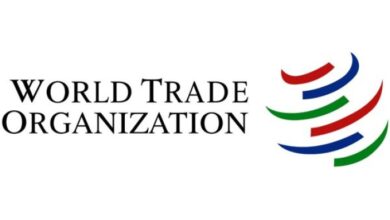
How America Is Trying to Reclaim the Microchip Industry
How America is trying to get back in the microchip business is a story of resurgence, a battle for technological dominance, and a quest for economic security. The United States, once a global leader in semiconductor manufacturing, saw its position dwindle as Asian competitors like Taiwan and South Korea surged ahead.
This shift had significant consequences, not just for the American economy but for the global tech landscape. Now, with a renewed sense of urgency, the US is implementing a multi-pronged strategy to regain its chipmaking prowess.
This strategy involves a mix of government initiatives, private investments, and a renewed focus on research and development. The CHIPS and Science Act, a landmark piece of legislation, provides billions of dollars in subsidies and tax breaks to incentivize domestic chip manufacturing.
This has spurred major American companies like Intel and TSMC to invest heavily in building new fabrication plants in the US, creating jobs and boosting the domestic semiconductor ecosystem.
The Decline of American Chip Manufacturing
The American microchip industry, once a dominant force in the global market, has experienced a significant decline in recent decades. This decline is a complex issue with roots in historical factors, shifting market dynamics, and geopolitical considerations. Understanding the causes of this decline is crucial for understanding the current efforts to revive the American chip industry.
Historical Factors Contributing to the Decline
The decline of the American chip industry can be traced back to a confluence of historical factors that created a perfect storm for the industry’s transformation.
- Shifting Focus to Consumer Electronics:In the 1980s and 1990s, the American chip industry shifted its focus from military and industrial applications to consumer electronics, leading to a decline in investment in advanced manufacturing and research and development. This shift, while initially driven by market demand, ultimately made the industry more vulnerable to competition from foreign players who were willing to invest in large-scale manufacturing and focus on cost efficiency.
- Deregulation and Globalization:The deregulation of the American financial markets in the 1980s and the subsequent globalization of the economy made it easier for foreign companies to enter the American market. This led to increased competition from companies in Asia, particularly in South Korea, Taiwan, and China, which had lower labor costs and government support for their semiconductor industries.
- The Rise of Intellectual Property Rights:The increasing importance of intellectual property rights in the semiconductor industry made it more difficult for American companies to compete with foreign companies that were willing to engage in intellectual property theft. This, combined with the lack of strong legal protection for intellectual property in some countries, made it difficult for American companies to protect their innovations.
The Rise of Foreign Competitors in Asia
The rise of foreign competitors, particularly in Asia, played a significant role in the decline of the American chip industry.
- Government Support and Investment:Asian governments, particularly in South Korea and Taiwan, provided substantial financial support and investment in their semiconductor industries, enabling them to build large-scale manufacturing facilities and invest heavily in research and development. This government support gave Asian companies a significant competitive advantage over their American counterparts.
- Lower Labor Costs:Asian countries had significantly lower labor costs compared to the United States, allowing them to manufacture chips at a lower cost. This cost advantage allowed Asian companies to undercut American companies on price, making it difficult for American companies to compete in the global market.
- Vertical Integration:Asian companies, particularly in South Korea and Taiwan, adopted a vertically integrated business model, controlling the entire process from chip design to manufacturing. This vertical integration allowed them to optimize their production processes and achieve economies of scale, further enhancing their competitive advantage.
Economic and Geopolitical Implications of the Decline
The decline of the American chip industry has significant economic and geopolitical implications.
- Job Losses and Economic Impact:The decline of the American chip industry has led to significant job losses in the United States, particularly in manufacturing and engineering sectors. This has had a negative impact on the American economy, reducing economic growth and increasing unemployment.
America’s quest to reclaim its microchip manufacturing dominance is a fascinating story, especially when you consider the unexpected twists and turns. While the government pours resources into domestic chip production, a completely different kind of “advanced technology” is grabbing headlines: the House panel is holding a public hearing on unexplained aerial sightings you can read more about it here.
It’s a reminder that while we strive to be leaders in the technological realm, there’s still so much we don’t understand about the world around us. Perhaps the future of American chip manufacturing is intertwined with the mysteries of the skies – who knows?
- National Security Concerns:The dependence on foreign companies for essential microchips has raised concerns about national security. The United States is now vulnerable to disruptions in the supply chain, which could have serious consequences for its military and critical infrastructure. This dependence also raises concerns about intellectual property theft and the potential for foreign companies to use their dominance in the semiconductor industry to gain strategic advantages.
- Technological Leadership:The decline of the American chip industry has also raised concerns about the United States’ ability to maintain its technological leadership. The semiconductor industry is a key driver of innovation and economic growth, and the United States’ dependence on foreign companies for essential microchips could hinder its ability to develop and deploy cutting-edge technologies in the future.
Government Initiatives and Policies: How America Is Trying To Get Back In The Microchip Business

The revival of the American semiconductor industry is a top priority for the US government. Recognizing the strategic importance of microchips in national security, economic competitiveness, and technological advancement, the government has implemented a range of policies and initiatives to incentivize domestic chip production and research.The most significant recent policy is the CHIPS and Science Act, passed in 2022.
This landmark legislation provides substantial financial support for semiconductor manufacturing, research, and workforce development. The CHIPS Act aims to boost domestic chip production and reduce reliance on foreign suppliers, particularly from China.
The CHIPS and Science Act
The CHIPS and Science Act is a comprehensive piece of legislation that allocates $52.7 billion for various initiatives to bolster the US semiconductor industry. The Act’s key provisions include:
- Financial Incentives for Chip Manufacturing:The Act provides billions of dollars in grants and tax credits to encourage domestic chip manufacturing. This funding aims to attract new chip fabrication plants (fabs) and expand existing ones, boosting production capacity and creating new jobs.
- Research and Development Support:The Act dedicates funds to support research and development in advanced semiconductor technologies, including artificial intelligence (AI) and quantum computing. This investment aims to maintain US technological leadership and foster innovation in the semiconductor sector.
- Workforce Development:The Act emphasizes the importance of a skilled workforce by investing in education and training programs related to semiconductor manufacturing and design. This aims to address the growing demand for qualified professionals in the chip industry.
- Supply Chain Resilience:The Act recognizes the need for a more resilient supply chain by supporting domestic production of critical materials and equipment used in chip manufacturing. This aims to reduce dependence on foreign suppliers and ensure a reliable source of materials for the US semiconductor industry.
The CHIPS Act is a major step towards revitalizing the American chip industry, but its effectiveness will depend on several factors, including:
- Effective Implementation:The Act’s success hinges on the efficient allocation of funds and the timely implementation of programs. Delays in these processes could hinder the intended impact of the Act.
- Private Sector Investment:The Act’s financial incentives are intended to attract private sector investment in chip manufacturing. The willingness of companies to invest and build new fabs will be crucial to realizing the Act’s goals.
- Global Competition:The global semiconductor landscape is highly competitive, with countries like China investing heavily in their own chip industries. The Act’s success will depend on the US’s ability to maintain its technological edge and attract talent in a competitive environment.
Public-Private Partnerships
The government recognizes that reviving the chip industry requires collaboration between the public and private sectors. Public-private partnerships are essential for:
- Shared Risk and Investment:Partnerships allow the government to share the financial burden of large-scale projects, reducing the risk for private companies. This encourages investment in advanced technologies and manufacturing facilities.
- Accelerated Innovation:Partnerships facilitate the exchange of knowledge and expertise between government research institutions and private companies, fostering innovation and accelerating the development of new technologies.
- Talent Development:Public-private partnerships can support workforce development initiatives, such as training programs and scholarships, ensuring a pipeline of skilled workers for the chip industry.
“The CHIPS and Science Act is a major step towards revitalizing the American chip industry, but it’s just the beginning. We need to continue to invest in research, development, and workforce training to ensure that the US remains a leader in semiconductor technology.” Dr. Maria Cantwell, Chair of the Senate Committee on Commerce, Science, and Transportation.
Industry Response and Investment
The decline in American chip manufacturing has spurred a significant response from both established and emerging companies, leading to a surge in investments aimed at revitalizing the domestic semiconductor industry. These investments represent a strategic shift towards bolstering national security, reducing reliance on foreign suppliers, and seizing opportunities in the rapidly growing global semiconductor market.
Strategic Goals of Investments
The strategic goals behind these investments are multifaceted and encompass a wide range of objectives, from bolstering national security to driving technological innovation.
- National Security: The dependence on foreign chip manufacturers has raised concerns about national security, as disruptions in supply chains could have significant implications for critical industries. Domestic chip production aims to mitigate these risks by ensuring a reliable and secure source of semiconductors for essential sectors such as defense, aerospace, and telecommunications.
- Technological Leadership: The semiconductor industry is a key driver of technological innovation, and the US aims to maintain its leadership in this field. Investing in domestic chip manufacturing fosters research and development, supporting the creation of cutting-edge technologies and maintaining a competitive edge in areas such as artificial intelligence, quantum computing, and advanced manufacturing.
- Economic Growth: The semiconductor industry is a significant contributor to economic growth, creating jobs and stimulating innovation across various sectors. Investments in domestic chip manufacturing are expected to create thousands of high-paying jobs and boost economic activity in regions where these facilities are located.
It’s fascinating to see America’s renewed focus on domestic chip production, much like the science of coaching teachers has evolved to create a more supportive and effective learning environment. Just as teachers need the right tools and guidance to excel, so too does the microchip industry require a robust ecosystem of research, development, and manufacturing to compete on a global scale.
This strategic shift is crucial to ensuring our nation’s technological independence and economic prosperity.
- Supply Chain Resilience: The COVID-19 pandemic exposed vulnerabilities in global supply chains, highlighting the need for greater resilience. Domestic chip production aims to reduce reliance on foreign suppliers, enhancing the robustness and security of the US semiconductor supply chain.
Technological Advancements and Innovation
The resurgence of American chip manufacturing is inextricably linked to technological advancements and continuous innovation. The pursuit of smaller, faster, and more efficient chips drives research and development, leading to a competitive edge in the global semiconductor market.
Advancements in Semiconductor Technology
The relentless pursuit of miniaturization in semiconductor technology has led to significant advancements in recent years. These advancements have resulted in smaller transistors, increased chip density, and improved performance. One notable development is the shift from 10 nanometer (nm) to 5nm and even 3nm nodes, allowing for more transistors to be packed into a smaller area.
This trend has enabled the creation of more powerful and energy-efficient processors, essential for modern computing and mobile devices. Another key advancement is the development of new materials and fabrication techniques. The use of extreme ultraviolet (EUV) lithography, for instance, allows for the creation of intricate patterns on silicon wafers, enabling the production of smaller and more complex chips.
Furthermore, researchers are exploring alternative materials like gallium nitride (GaN) and silicon carbide (SiC) to enhance performance and efficiency. These materials offer advantages in terms of power handling, heat dissipation, and operating frequencies, paving the way for next-generation devices.
Global Implications and Partnerships
The resurgence of American chip manufacturing has profound implications for global supply chains, fostering international cooperation and driving innovation. This revitalization is not merely an American endeavor but a global effort that necessitates collaboration among nations to address the chip shortage and secure a future where technological advancement is accessible to all.
Impact on Global Supply Chains
The resurgence of American chip manufacturing is poised to significantly alter the global semiconductor landscape. It is expected to:
- Reduce Dependence on Asia:The United States has long relied heavily on Asian manufacturers, particularly in Taiwan and South Korea, for its semiconductor needs. The resurgence of domestic production aims to diversify supply chains and reduce dependence on a single region, thereby mitigating geopolitical risks and ensuring a more resilient semiconductor ecosystem.
- Boost Global Competitiveness:By increasing domestic production, the United States aims to enhance its competitiveness in the global technology market. This resurgence will create new jobs, attract investment, and foster innovation, ultimately strengthening the American economy and its role in the global technological landscape.
- Promote Regionalization:The resurgence of American chip manufacturing is likely to encourage the development of regional semiconductor hubs in other parts of the world. This could lead to a more balanced and diversified global supply chain, reducing the risk of disruptions caused by geopolitical tensions or natural disasters.
International Cooperation in Addressing the Chip Shortage, How america is trying to get back in the microchip business
International cooperation is crucial to addressing the global chip shortage and ensuring a stable and reliable supply of semiconductors.
The US is pouring resources into reshoring its microchip manufacturing, hoping to regain its technological edge. It’s a complex undertaking, requiring not only significant investment but also a skilled workforce. This brings to mind the importance of sizing up the decisions of older adults as they navigate retirement and potential second careers.
Their experience and knowledge could be invaluable in building the future of American chipmaking, ensuring the success of this crucial national initiative.
- Joint Research and Development:Collaborative efforts between nations in research and development are essential to pushing the boundaries of semiconductor technology and developing innovative solutions to address the shortage. This could involve sharing expertise, resources, and intellectual property to accelerate the development of advanced chip manufacturing processes and technologies.
- Global Coordination of Supply Chains:International collaboration is necessary to optimize global semiconductor supply chains, ensuring efficient allocation of resources and preventing bottlenecks. This could involve sharing real-time data on chip production and demand, coordinating investment in new manufacturing facilities, and fostering collaboration among industry players.
- Multilateral Trade Agreements:The establishment of multilateral trade agreements that promote free trade and facilitate the movement of semiconductors across borders is essential for a healthy and competitive global chip market. These agreements can help reduce tariffs, streamline customs procedures, and create a level playing field for all players in the semiconductor industry.
Collaboration with Allies in Research and Development
Collaboration with allies in research and development is critical to maintaining technological leadership and fostering innovation in the semiconductor industry.
- Joint Research Programs:The United States can leverage its close relationships with allies to establish joint research programs, pooling resources and expertise to develop cutting-edge semiconductor technologies. This could involve collaborations on fundamental research, advanced materials, and next-generation chip designs.
- Technology Transfer and Sharing:Sharing best practices, knowledge, and intellectual property between allies can accelerate the development and adoption of new semiconductor technologies. This could involve joint ventures, licensing agreements, and collaborative research projects.
- Shared Infrastructure:Allies can work together to build shared infrastructure, such as research facilities, fabrication plants, and testing labs, to reduce costs and accelerate innovation. This could involve joint investments in state-of-the-art equipment and facilities, enabling collaboration on advanced research and development projects.
Challenges and Opportunities

The revival of American chip manufacturing faces numerous challenges, but it also presents significant opportunities for growth and expansion. The ability of the US to regain global leadership in semiconductor technology hinges on addressing these challenges effectively and capitalizing on these opportunities.
Challenges in Rebuilding American Chip Manufacturing
The challenges facing the American chip industry are multifaceted and require a comprehensive approach for effective resolution.
- Talent Gap:The semiconductor industry requires a highly skilled workforce, and the US faces a shortage of engineers and technicians with the necessary expertise. This gap is exacerbated by the increasing complexity of chip design and manufacturing processes.
- Cost Competitiveness:The US faces stiff competition from countries like China and Taiwan, which offer lower manufacturing costs and government subsidies. This makes it challenging for American companies to compete on price, particularly for commodity chips.
- Research and Development:Sustaining technological leadership requires significant investments in research and development. The US needs to continue to innovate and push the boundaries of semiconductor technology to stay ahead of the curve.
- Supply Chain Resilience:The current global semiconductor supply chain is highly complex and vulnerable to disruptions. The US needs to strengthen its domestic supply chain and reduce its reliance on foreign suppliers.
- Government Regulations:Government regulations can impact the cost and speed of chip manufacturing. Balancing the need for national security with fostering innovation and competition is a key challenge.
Opportunities for Growth and Expansion
Despite the challenges, the American chip industry has significant opportunities for growth and expansion.
- Emerging Technologies:The rise of new technologies, such as artificial intelligence, quantum computing, and 5G, is driving demand for advanced chips. This presents a significant opportunity for the US to capitalize on its technological strengths.
- Government Support:The US government is investing heavily in semiconductor manufacturing through initiatives like the CHIPS Act. This support is crucial for attracting investment and boosting domestic production.
- Innovation Hubs:The US has a strong ecosystem of universities, research institutions, and startups that are driving innovation in semiconductor technology. This ecosystem provides a fertile ground for developing new technologies and attracting talent.
- Partnerships:Collaborations between industry, academia, and government are essential for addressing the challenges and seizing the opportunities in semiconductor manufacturing. These partnerships can foster innovation, accelerate development, and create a more resilient supply chain.
Potential for Regaining Global Leadership
The US has the potential to regain global leadership in semiconductor technology, but it requires a concerted effort from industry, government, and academia.
- Investing in Education and Training:The US needs to invest in education and training programs to develop a skilled workforce for the semiconductor industry. This includes supporting STEM education, providing apprenticeships, and attracting talent from around the world.
- Enhancing Research and Development:The US must continue to invest in fundamental research and development to maintain its technological edge. This includes supporting research at universities, national labs, and private companies.
- Building a Resilient Supply Chain:The US needs to diversify its supply chain and reduce its reliance on foreign suppliers. This can be achieved through investments in domestic manufacturing, strategic partnerships, and stockpiling of critical materials.
- Promoting Innovation and Competition:The US should create an environment that fosters innovation and competition. This includes reducing regulatory barriers, promoting open standards, and supporting startups and small businesses.
Summary
The journey to reclaim the microchip industry is a marathon, not a sprint. While the US faces formidable challenges, including the need to attract and train a skilled workforce and overcome supply chain bottlenecks, the potential rewards are substantial. A resurgent American chip industry could revitalize the US economy, enhance national security, and position the US to lead the next wave of technological innovation.
As the world becomes increasingly reliant on semiconductors, the battle for chip dominance is likely to intensify, making the US’s efforts to regain its leadership position a critical factor in shaping the future of technology.






